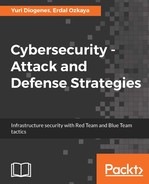Now that you have the fundamental areas covered, you need to put the incident response team together. The format of the team will vary according to the company size, budget, and purpose. A large company may want to use a distributed model, where there are multiple incident response teams with each one having specific attributes and responsibilities. This model can be very useful for organizations that are geodispersed, with computing resources located in multiple areas. Other companies may want to centralize the entire incident response team in a single entity. This team will handle incidents regardless of the location.
After choosing the model that will be used, the company will start recruiting employees to be part of the team.
The incident response process requires personnel with technically broad knowledge while also requiring deep knowledge in some other areas. The challenge is to find people with depth and breadth in this area, which sometimes leads to the conclusion that you need to hire external people to fulfill some positions, or even outsource part of the incident response team to a different company.
The budget for the incident response team must also cover continuous improvement via education, the acquisition of proper tools (software), and hardware. As new threats arise, security professionals working with incident response must be ready, and trained to respond well. Many companies fail to keep their workforce up to date, which is not good practice. When outsourcing the incident response process, make sure the company that you are hiring is accountable for constantly training their employees in this field.
If you plan to outsource your incident response operations, make sure you have a well-defined service-level agreement (SLA) that meets the severity levels that were established previously. During this phase, you should also define the team coverage, assuming the need for 24-hour operations.
Here, you will define:
- Shifts: How many shifts will be available for 24-hour coverage?
- Team allocation: Based on this shift, who is going to work on each shift, including full-time employees and contractors?
- On-call process: It is recommended that you have on-call rotation for technical and management roles in case the issue needs to be escalated.
